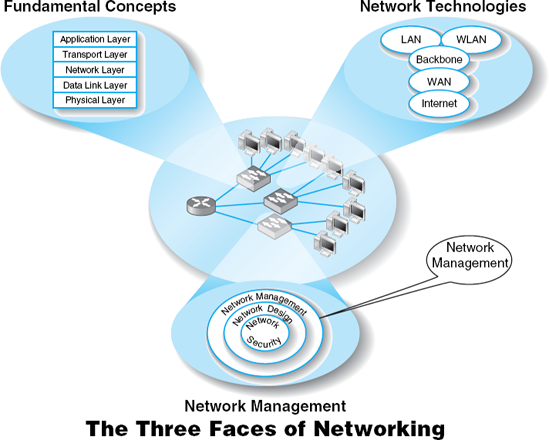Chapter 13. NETWORK MANAGEMENT

NETWORK MANAGERS perform two key tasks: (1) designing new networks and network upgrades and (2) managing the day-to-day operation of existing networks. This chapter examines day-to-day network management, discussing the things that must be done to ensure that the network functions properly. We discuss the network management organization and the basic functions that a network manager must perform to operate a successful network.
OBJECTIVES ▾
Understand what is required to manage the day-to-day operation of networks
Be familiar with the network management organization
Understand configuration management
Understand performance and fault management
Be familiar with end user support
Be familiar with cost management
CHAPTER OUTLINE ▾
INTRODUCTION
ORGANIZING THE NETWORK MANAGEMENT FUNCTION
The Shift to LANs and the Internet
Integrating LANs, WANs, and the Internet
Integrating Voice and Data Communications
CONFIGURATION MANAGEMENT
Configuring the Network and Client
Computers Documenting the Configuration
PERFORMANCE AND FAULT MANAGEMENT
Network Monitoring
Failure Control Function
Performance and Failure Statistics
Improving Performance
END USER SUPPORT
Resolving Problems
Providing End User Training
COST MANAGEMENT
Sources of Costs
Reducing Costs
IMPLICATIONS FOR MANAGEMENT
SUMMARY
INTRODUCTION
Network management is the process of operating, monitoring, and controlling the network to ensure ...
Get Business Data Communications and Networking now with the O’Reilly learning platform.
O’Reilly members experience books, live events, courses curated by job role, and more from O’Reilly and nearly 200 top publishers.

